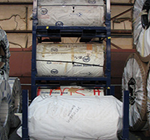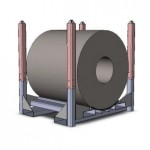Improving Storage Facility Layout Using Lean Principles
Storage facilities are essential, in managing the supply chain, warehousing and distribution processes. Their efficiency greatly influences a company’s performance. A strategic approach, to improving storage facility layout and operations involves implementing Lean principles. These principles originating from the Toyota Production System focus on eliminating waste and enhancing processes to maximize value. Let’s explore how Lean principles can be used to optimize storage facility layouts boost efficiency cut costs and enhance productivity overall.

What are Lean Manufacturing Principles?
Lean principles focus on five core concepts:
- Value: Define what value means from the customer’s perspective.
- Value Stream: Identify all the steps in the value stream and eliminate waste.
- Flow: Ensure smooth, uninterrupted flow of products or services.
- Pull: Produce only what is needed when it is needed.
- Perfection: Continuously strive for improvement.
Applying these principles to storage facility layouts involves systematically analyzing current processes, identifying inefficiencies, and implementing changes that promote a seamless flow of goods.
1. Defining Value in Storage Facilities
The first step in applying Lean principles is to define value from the perspective of the end-user or customer. In the context of storage facilities, value can be interpreted as the ability to store, retrieve, and manage inventory efficiently. This includes factors like minimizing the time taken to locate and retrieve items, reducing errors in inventory management, and ensuring that space is utilized optimally.
2. Mapping the Value Stream
Mapping the value stream involves identifying all activities and processes involved in the storage facility operations, from receiving goods to dispatching them. This helps in identifying value-added and non-value-added activities. Common non-value-added activities in storage facilities include excessive movement of goods, redundant handling, overstocking, and underutilized space.
Steps to Map the Value Stream:
- Identify Processes: List all processes involved in the storage facility operations.
- Gather Data: Collect data on each process, including time taken, resources used, and frequency of occurrence.
- Create a Value Stream Map: Develop a visual representation of the processes, highlighting value-added and non-value-added activities.
- Analyse and Identify Waste: Identify areas where waste occurs, such as overproduction, waiting times, unnecessary transport, and excess inventory.
3. Creating Flow
Creating flow ensures that products move smoothly through the storage facility without interruptions. This can be achieved by redesigning the layout to minimize bottlenecks and streamline processes.
Techniques to Create Flow:
- Layout Optimization: Design the facility layout to minimize movement and handling of goods. This includes placing frequently used items closer to the dispatch area and organizing products logically.
- Standardized Work: Implement standardized procedures for all tasks to ensure consistency and efficiency. This reduces variability and minimizes errors.
- Visual Management: Use visual aids such as labels, color-coding, and floor markings to guide employees and reduce the time taken to locate items.
4. Implementing a Pull System
A pull system ensures that inventory is only replenished when there is demand, reducing overstocking and minimizing storage costs. This can be achieved by implementing Just-In-Time (JIT) inventory management.
Steps to Implement a Pull System:
- Demand Forecasting: Use historical data and market trends to accurately forecast demand.
- Kanban System: Implement a Kanban system to signal when inventory needs to be replenished. This can be done using physical Kanban cards or digital systems.
- Supplier Collaboration: Work closely with suppliers to ensure timely delivery of goods based on demand.
5. Striving for Perfection
Continuous improvement is a core tenet of Lean principles. Striving for perfection involves regularly reviewing processes, gathering feedback, and making incremental improvements.
Techniques for Continuous Improvement:
- Kaizen: Encourage employees to suggest improvements and implement small, incremental changes.
- PDCA Cycle: Use the Plan-Do-Check-Act (PDCA) cycle to test and implement changes systematically.
- Benchmarking: Compare performance metrics with industry standards to identify areas for improvement.
Benefits of Lean Principles in Warehouse Storage Management
Implementing Lean principles in warehouse storage management offers numerous benefits that can significantly enhance the efficiency and effectiveness of operations. These benefits extend beyond simple cost savings and include improvements in productivity, quality, and employee satisfaction.
1. Increased Efficiency: Lean principles streamline processes and eliminate waste, leading to increased operational efficiency. By optimizing the layout and ensuring smooth flow, the time taken to store and retrieve items is reduced. This efficiency translates into faster order fulfilment and improved customer satisfaction.
2. Cost Reduction: One of the primary goals of Lean is to minimize waste, which directly impacts cost reduction. By implementing a pull system, overstocking is minimized, reducing the costs associated with excess inventory. Additionally, optimized layouts and standardized work processes lower labour costs by reducing the time and effort required to perform tasks.
3. Enhanced Space Utilization: Lean principles encourage optimal use of available space. By analysing and redesigning the layout, storage facilities can accommodate more inventory within the same space, delaying or avoiding the need for costly expansions. Efficient space utilization also ensures that inventory is organized logically, making it easier to locate and retrieve items.
4. Improved Quality and Accuracy: Standardized work processes and visual management tools reduce variability and errors in warehouse operations. This leads to higher accuracy in order picking and inventory management, which is crucial for maintaining customer trust and satisfaction. Fewer errors also mean less time spent on corrective actions and rework.
5. Faster Response Times: With a pull system and optimized processes, warehouses can respond more quickly to changes in demand. Just-In-Time inventory management ensures that products are available when needed, reducing lead times and improving the ability to meet customer demands promptly.
6. Increased Employee Engagement: Lean principles emphasize employee involvement and continuous improvement. By engaging employees in identifying inefficiencies and suggesting improvements, warehouses foster a culture of ownership and accountability. This involvement boosts morale and job satisfaction, leading to higher productivity and reduced turnover.
Conclusion
Implementing lean principles to enhance the design of storage facilities can result in advantages, such, as increased effectiveness, cost savings and heightened customer approval. By defining value, mapping the value stream, creating flow, implementing a pull system, and striving for perfection companies can streamline their storage facility processes and secure a competitive advantage. Consistent enhancements and active engagement from employees are crucial, for maintaining these advancements and attaining prosperity.
About The Author












